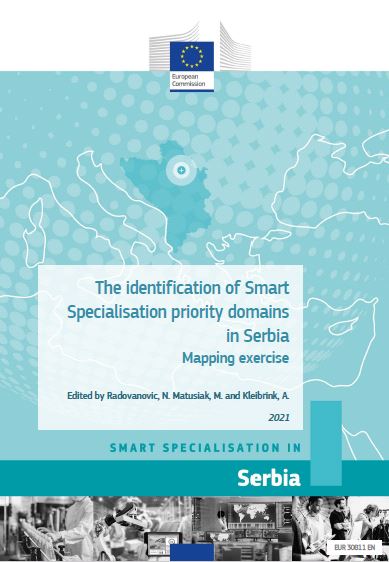The identification of Smart Specialisation priority domains in Serbia
The report documents the findings of the analytical phase of development of the Smart Specialisation Strategy for Serbia, implemented with the methodological and financial support of the Joint Research Centre of European Commission (JRC).
Abstract
The analysis follows the Smart Specialisation Framework for EU Enlargement and Neighbourhood Region (Matusiak and Kleibrink, 2018) and has two complementary parts: the quantitative mapping aims to identify the potential Smart Specialisation priority domains based on the set of indicators showing critical mass, specialisation and growth rates in subsectors of economic activity and specialisation in science, technology and innovation outputs. The results of this analysis are in a second step verified through a qualitative mapping, based on structured interviews, focus groups and case studies. Both analyses provide a sound base for the following entrepreneurial discovery phase of the strategy development. The findings from both analyses represented key inputs for the upcoming stakeholder dialogue under the Entrepreneurial Discovery Process (EDP).Serbia decided to introduce the Smart Specialisation approach into the development of its innovation policy in 2016. Guidance and technical support has been provided by the Joint Research Centre ever since, based on the Smart Specialisation Framework for the EU Enlargement and Neighbourhood Region. Serbia created its National Smart Specialisation team for coordinating the Smart Specialisation process and it has run the process until the strategy was adopted in February 2020. The analytical team of the National Smart Specialisation Team of Serbia played an important role in providing expert support and developing local capacities for both the quantitative mapping, conducted by the Fraunhofer ISI, and the qualitative mapping. Another important contributor was the National Statistical Office of Serbia, which provided necessary disaggregated data sets which made the analysis possible. The quantitative mapping revealed several primary and secondary preliminary priority areas which were further analysed in the qualitative mapping phase. The qualitative analysis set out four final priority domains with sub-areas for Smart Specialisation in Serbia.

